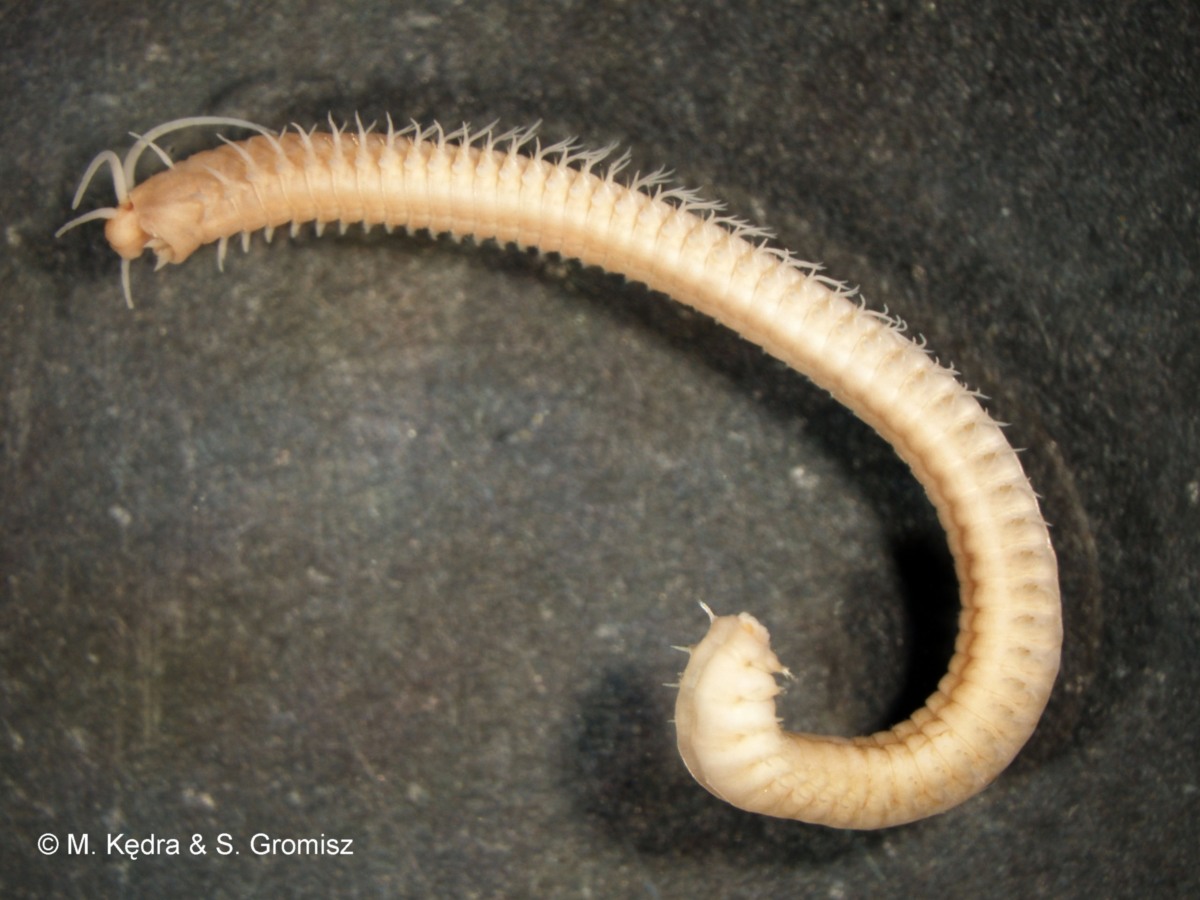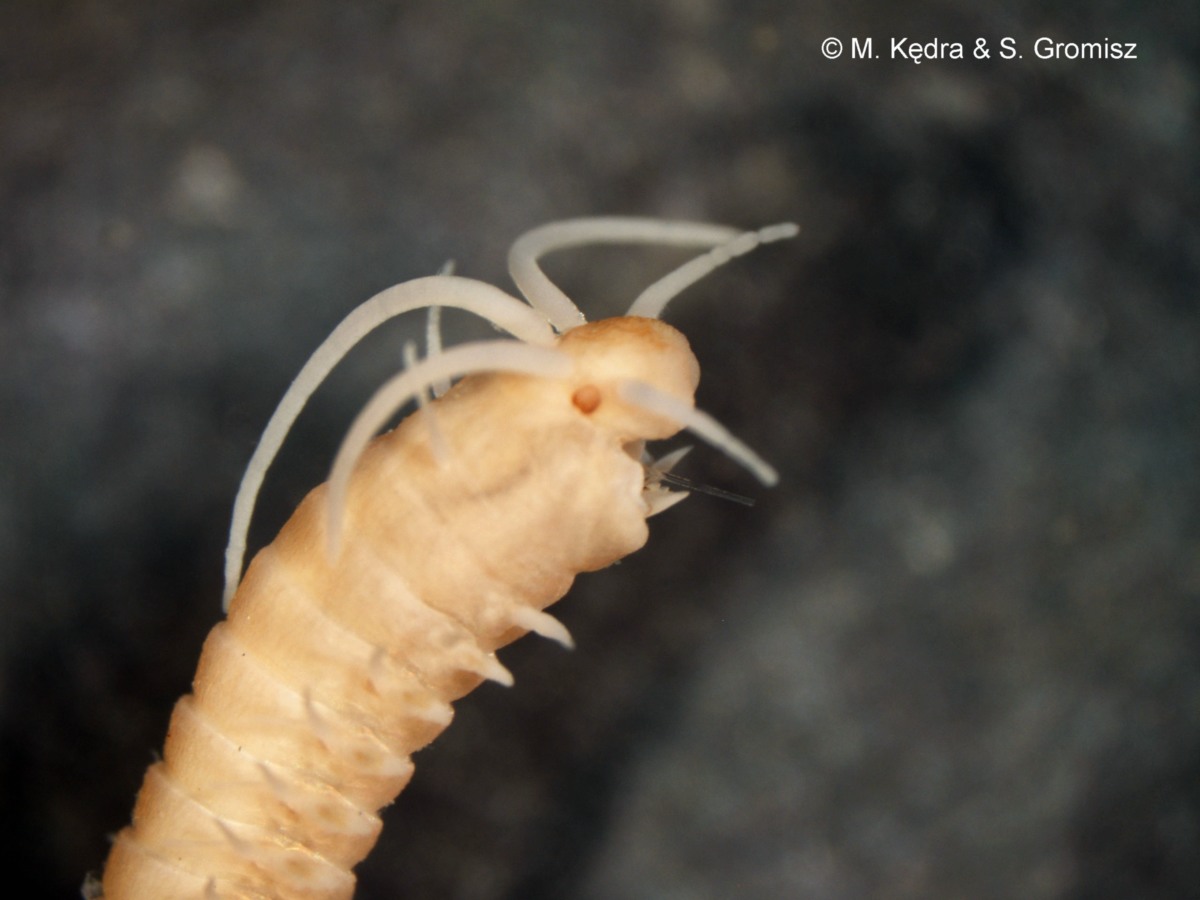Paradiopatra quadricuspis (M. Sars in G.O. Sars, 1872)

|

|
Onuphis quadricuspis M. Sars, 1872
Sarsonuphis quadricuspis Fauchald, 1982
Paradiopatra quadricuspis Paxton, 1986
Distinguishing characteristics
A pair of slender peristomial cirri.
Branchiae with four or five filaments beginning on chaetigers 5-9.
Species description
Body long and slender. Prostomium oval, with a pair of ovoid frontal palps and a pair of cushion-like ventral palps. Five antennae with about six basal annulations. Sometimes two small eyes present. Peristomium with a pair of slender, cylindrical peristomial cirri near the anterior margin. First three chaetigers with enlarged and forwardly directed parapodia with short and awl-shaped ventral cirri. Branchiae start at chaetiger 5-9, absent from a long posterior region, with four or five filaments. First five parapodia with three types of chaetae: capillary, pseudoarticulate and hooded hooks with bifid or trifid tips. Two long and two short pygidial cirri. Tube - cylindrical, membranous lining encrusted with mud or fine shell debris.
Size
Up to 60 mm for up to 160 segments.
Color
Living animal with one wide reddish brown band per segment.
Habitat
Sand and mud or mixtures of both with gravel and pebbles. From 40 to 2000 m.
Mobility
Feeding
Omnivore.
Predator.
Scavenger.
Life cycle
Distribution
Distribution depends mainly on temperature – species prefers temperatures higher to 3,5°C. In Norway the biomass is more influenced by the bottom type than by the depth.

